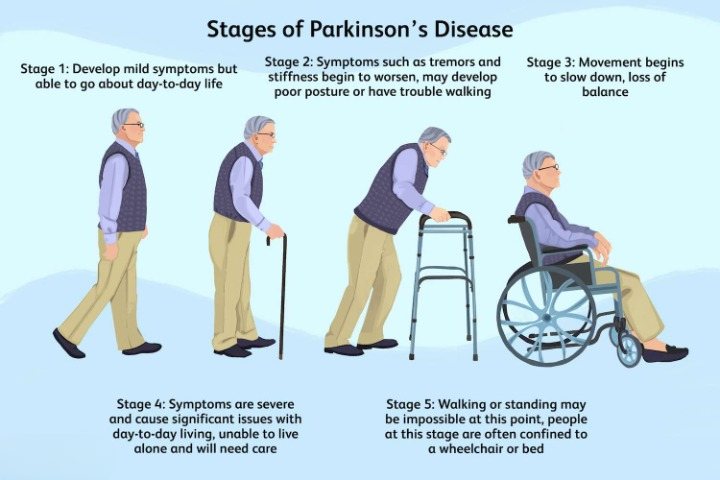Parkinson’s Disease (PD) is a progressive neurological disorder that primarily affects movement. It develops gradually, often starting with barely noticeable tremors in just one hand. Over time, the disease can lead to a variety of physical and cognitive changes.

Causes and Risk Factors
The exact cause of Parkinson’s Disease is unknown, but it is thought to result from a combination of genetic and environmental factors. The disease is associated with the degeneration of nerve cells in the substantia nigra, a region of the brain that controls movement. This degeneration leads to a reduction in dopamine, a neurotransmitter that plays a key role in sending messages to the part of the brain that controls movement and coordination.
Risk factors for PD include:
- Age: Parkinson’s primarily affects people over the age of 60.
- Heredity: Having a close relative with Parkinson’s increases the chances, but the risk is still generally low unless many family members are affected.
- Sex: Men are more likely to develop Parkinson’s than women.
- Exposure to toxins: Ongoing exposure to herbicides and pesticides may slightly increase your risk.
Symptoms
Symptoms of Parkinson’s Disease vary from person to person but typically include:
- Motor symptoms: These include tremors, slow movement (bradykinesia), stiffness, and difficulty with balance and coordination.
- Non-motor symptoms: These can include issues such as sleep disturbances, sensory changes, emotional changes, and cognitive decline.
As the disease progresses, patients may experience difficulties in walking and talking. They may also have mental and behavioral changes, sleep problems, depression, memory difficulties, and fatigue.
Diagnosis
There is no specific test for diagnosing Parkinson’s Disease. Diagnosis is based on medical history, a review of signs and symptoms, and a neurological and physical examination. Doctors may order tests to rule out other diseases that could be causing the symptoms.
Treatment
While there is no cure for Parkinson’s Disease, treatments are available to help control the symptoms. These treatments include:
- Medications: Medications can help manage problems with walking, movement, and tremor by increasing the brain’s supply of dopamine. However, dopamine precursors can lose effectiveness over time.
- Surgical therapies: In some cases, surgical procedures such as Deep Brain Stimulation (DBS) are considered when medication cannot adequately control symptoms.
- Lifestyle changes and supportive therapies: Physical therapy, exercise, speech therapy, and occupational therapy can also help manage symptoms and improve quality of life.
Management and Support
Managing Parkinson’s Disease is an ongoing process that includes medical care, lifestyle adjustments, and possibly the integration of support services involving nurses, social workers, and therapists. Support from a community of healthcare providers, family, friends, and support groups can provide the necessary help and emotional support to manage the disease.
Understanding and research into Parkinson’s Disease continue to evolve, with ongoing studies focusing on new treatments and potential ways to prevent the disease. Advances in genetics, neuroimaging, and neuropsychology are providing new insights into how Parkinson’s develops and how it can be more effectively treated and managed.

